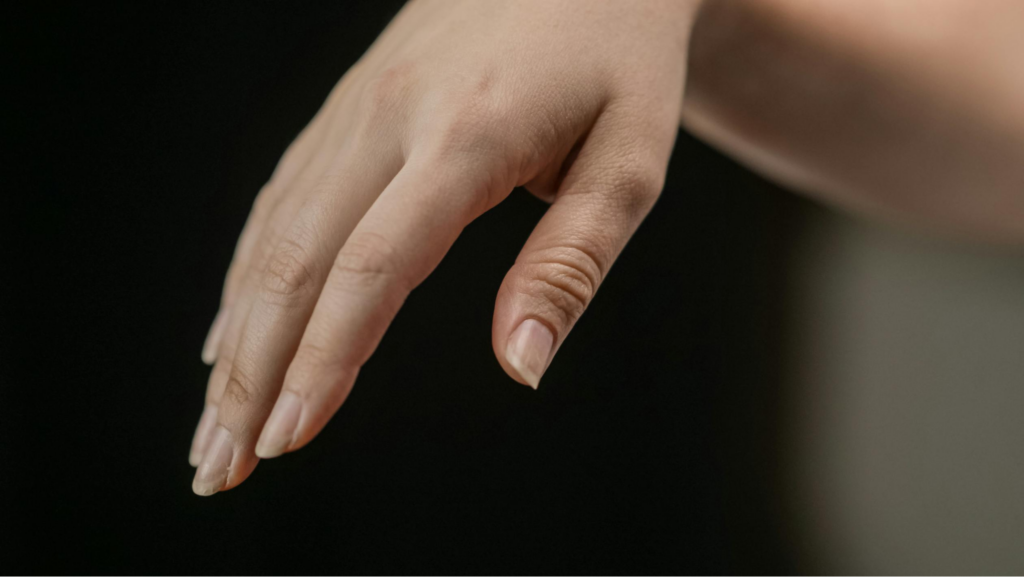
Your nails are more than just a canvas for colorful polish; they can also be windows into your overall health. The color of your nail beds can reveal a lot about what’s going on inside your body. This blog post will explore the significance of nail health, what normal nail bed color looks like, and how changes might indicate underlying health issues. We’ll also share tips on maintaining nail health, so you can keep your nails—and your body—in top shape.
Understanding the Normal Nail Bed Color
A healthy nail bed should typically be a light pink color. This hue indicates good blood circulation and healthy tissue underneath the nail. The nail surface should be smooth and free from any major ridges or spots. It’s important to recognize what normal looks like so you can easily spot any changes.
Why Pink is Ideal
The pink color of healthy nails comes from the blood vessels in the nail bed. If your nails are this color, you can generally feel confident that your circulation is in good shape and that you’re not lacking in essential nutrients.
Variations of Normal
While light pink is the standard, slight variations are common and usually harmless. Some people may have slightly darker or lighter shades due to genetic factors. However, sudden or drastic changes in color should raise a red flag.
When to Be Concerned
If your nail beds are consistently a different color—such as white, yellow, or blue—it could be a sign of an underlying health issue. It’s important to consult a healthcare provider if you notice these changes.
Signs of Nail Bed Color Changes
Changes in the color of your nail beds can be subtle or dramatic, but both can be significant. Here are some common color changes and what they might mean.
White Nail Beds
White nail beds can be a sign of anemia or liver problems.
If your nails are mostly white with darker rims, it might indicate a more serious condition like liver disease.
Yellow Nail Beds
Yellow nails can be a sign of fungal infection, but they can also indicate more serious conditions like thyroid disease, lung disease, or diabetes. If accompanied by other symptoms, it’s wise to seek medical advice.
Blue Nail Beds
Blue or purplish nail beds indicate a lack of oxygen in the blood. This could be due to respiratory issues, cardiovascular problems, or a reaction to certain medications. Immediate medical attention is recommended if you experience this.
Health Conditions Associated with Nail Bed Color
Your nails can act as an early warning system for various health conditions. Here are some of the ailments that can be detected through changes in nail bed color.
Cardiovascular Issues
Blue or purple nail beds are often linked to cardiovascular problems. Poor circulation or heart issues can reduce the oxygen supply to your nails, causing discoloration.
Respiratory Problems
Conditions like asthma or chronic obstructive pulmonary disease (COPD) can also lead to blue nails. These diseases reduce the oxygen levels in your blood, which is reflected in the color of your nail beds.
Liver and Kidney Diseases
White or pale nail beds can be a sign of liver or kidney disease. These organs play crucial roles in detoxifying your blood, and any dysfunction can show up in your nails.
Other Nail Health Indicators
While color is a significant indicator, other aspects of your nails can also hint at underlying health issues. Texture, thickness, and growth rate are all elements to consider.
Ridges and Pitting
Vertical ridges are usually harmless and a part of aging, but horizontal ridges can indicate stress, malnutrition, or even heart attack. Pitting or small depressions can be a sign of psoriasis or alopecia.
Brittle Nails
If your nails are consistently brittle or prone to breaking, it could be a sign of thyroid issues or other metabolic disorders. Ensuring you have a balanced diet rich in essential nutrients can help improve nail strength.
Thickened Nails
Thick nails can sometimes be a result of fungal infections, but they can also indicate lung disease or lymphedema. If over-the-counter treatments don’t work, it’s best to consult a healthcare professional.
Tips for Maintaining Nail Health
Taking care of your nails is about more than just aesthetics. Proper maintenance can prevent potential health issues and keep your nails looking their best.
Balanced Diet
A healthy diet rich in vitamins and minerals is crucial. Foods high in biotin, such as eggs, nuts, and whole grains, can strengthen your nails. Vitamin E and zinc are also essential for nail health.
Regular Grooming
Regularly trimming and filing your nails can prevent them from breaking or splitting.
Moisturizing your nails and cuticles can also keep them healthy and hydrated.
Avoid Harsh Chemicals
Exposing your nails to harsh chemicals, like those found in some cleaning products and nail polishes, can weaken them. Wearing gloves while doing household chores and using non-toxic nail products can help.
Wrapping It Up
Your nails can provide valuable insights into your overall health. By paying attention to changes in nail bed color and other indicators, you can catch potential health issues early. Don’t ignore what your nails are trying to tell you. For persistent or concerning changes, consult a healthcare provider. Taking proactive steps in maintaining your nail health can lead to a healthier, happier you. And remember, whether it’s bunions or brittle nails, your body has unique ways of signaling that it needs attention—so always stay tuned in! If you do have an issue with bunions, seeking help from a specialist, such as The Bunion Cure, is the right thing to do.
Keeping these things in mind can help prevent any further health complications, so feel free to share this knowledge with friends and family!












